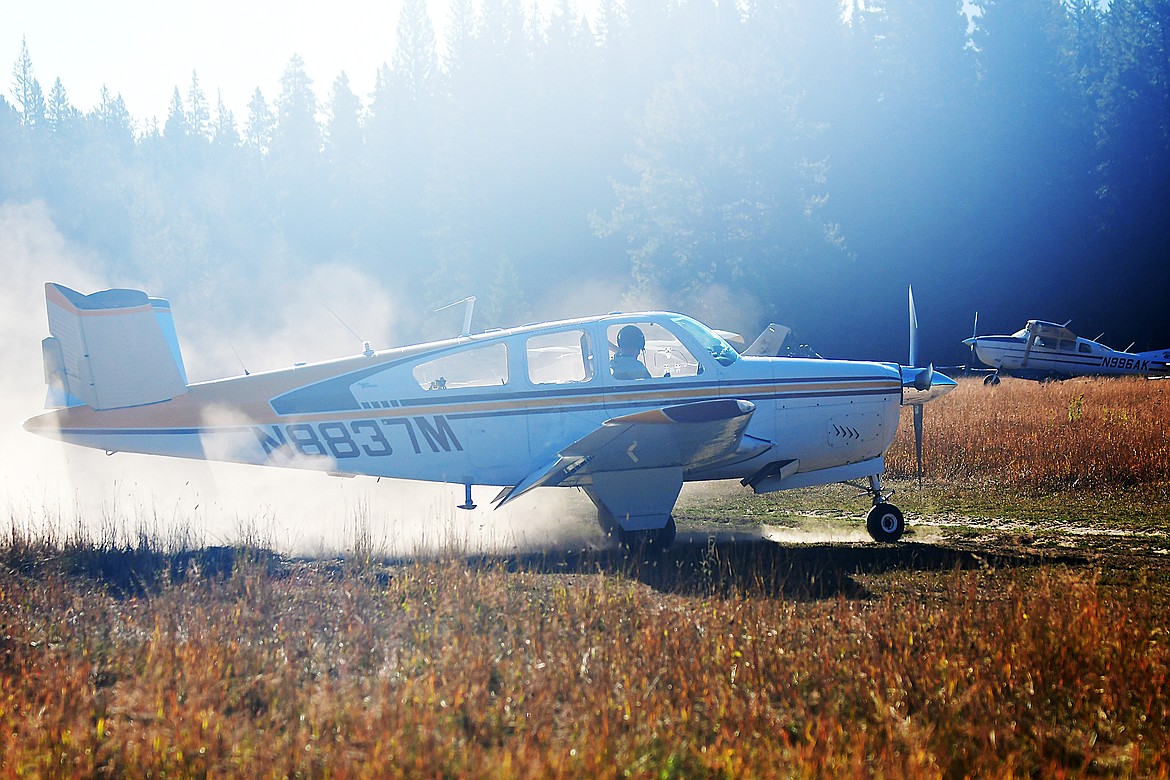Historic Schafer Meadows airstrip restored
Dust swirled behind slow-thudding hooves, and the clanking of metal harness rigging and the booming commands of “Come haw!” and “Step one!” could be heard once again at the remote Schafer Meadows airstrip located deep in the Great Bear Wilderness last week.
After nearly 40 years, the U.S. Forest Service is reviving the historical practice of maintaining the airstrip using a team of mules and two vintage dirt graders.
The project has been in the works for the last five years and finally materialized this summer through the collaboration of the Forest Service, a group of volunteers, the Montana Pilots Association and the Recreational Aviation Foundation.
The labor and expertise of the project was undertaken by Jeremy Rust, the wilderness trails manager out of Schafer Meadows in the Spotted Bear Ranger District and Guy Zoellner, the wilderness trails manager for Big Prairie. The two also recruited the help of volunteers Fred Flint and Colin Milone, both seasoned packers with decades of work experience for the Forest Service.
“This was the culmination of a lot of people’s hard work,” Zoellner said.
TO BEGIN the project, a wooden box grader, necessary for the first few passes in smoothing the runway, had to be built. Flint’s son Jim, fire management officer for the Spotted Bear Ranger District, was able to replicate one from historic design plans shared by the Rocky Mountain Ranger District Station out of Choteau. The box grader consists of a heavy-timbered frame with large metal spikes at the front used as teeth to break up the soil and bars of flat steel behind to flatten the roughed-up ground. The hefty implement weighs about a ton once a crew of three drivers sits atop, and is dragged, with full resistance, behind a straining team of mules. It takes a crew of three to run the the team pulling the implements: Zoellner the skinner, who manned the reins and gave voice commands; Milone the whipper, who tapped and guided the mules with a long willow bole to reinforce the commands; and Rust the tripper, who held the line to “e-brake” the whole operation if necessary.
The next phase required resurrecting an early 1900s machine called the Adams Leaning Wheel Grader that had been languishing on the Schafer compound for as long as anyone could remember, and was most likely used during the construction of the airstrip in 1933. The Adams is a two-wheeled all-metal frame grader with an adjustable blade and wheels that can be tilted or “leaned” to counteract the force of the dirt being scraped. Nearly 15 years ago Fred Flint and his son, Jim, unearthed parts of the machine, scattered in the boneyard of the compound, and reassembled them into much of its original form. It then sat as a historic relic on display for visitors in the meadow until recently, when Fred Flint added the final touches to get it fully functional. Fred Flint, who is now retired from a 30 year career with the Forest Service, much of it in the Hungry Horse and Spotted Bear Ranger Districts, was instrumental in getting the Adams grader operational. According to Rust and Zoellner, Flint was the “NASCAR pitstop mechanic,” fixing everything that would break down or needed tweaking. He rebuilt the floorboards, replaced the tongue and added an old tractor seat for the driver.
Historically, there were two parallel landing strips at the site, and pilots would alternate between the two, landing on one for about three seasons before switching to the next. This allowed time for the previous strips to regenerate, and helped maintain the health and vitality of the meadows.
“Just like rest/rotation grazing practices,” said Zoellner, who had 200 pounds of native seed, sourced out of the Forest’s Coeur d’Alene plant nursery, packed into the station. The plan is to seed the airstrip this fall and again in the spring.
WHILE GRADER maintenance ceased sometime before the 1980s, pilots still alternated between two airstrips until about 5 to 10 years ago when one strip became so unusable that the current one began bearing all the traffic. The current landing strip has now become rough enough that pilots sought to revive the old system.
The MPA and RAF were instrumental in lobbying the Forest Service to allocate funding towards this specific project, according to Scott Newpower, Montana liaison for the RAF. The funding paid for materials and supplies, some salary, and a new pair of mules, Bella and Bull, to help pull the graders.
The lapse in grading maintenance over the years is in part due to a declining budget which slowly stripped the Schafer Station of a mule team, and partly due to a loss of knowledge on how to man the historic graders.
The hope is to eventually build up a mule team for full-time use at the Schafer compound. The two new mules, recent reallocation of budget and the newly passed Great American Outdoors Act should help with that, said Rust.
The Schafer Meadows airstrip is the only active landing strip left in designated wilderness in the state of Montana. Rust, who’s overseen the station for the past three years, and who made it home this summer with his wife and infant daughter, said he appreciates the airstrip for the recreational possibilities it opens up for the public.
“The airstrip allows this area of remote wilderness to become just another trailhead for recreators to base out of,” said Rust.



